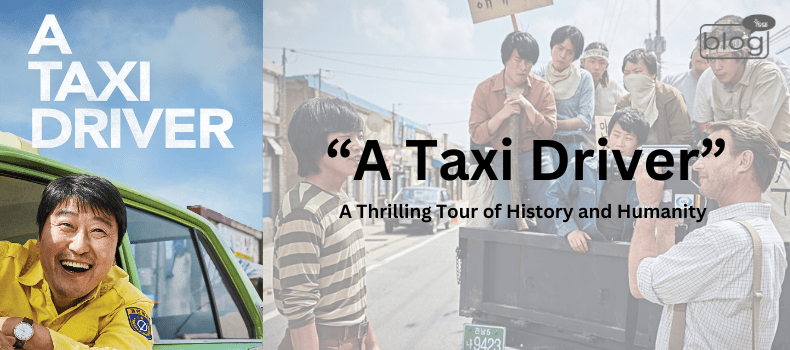A Thrilling Tour of History and Humanity
“A Taxi Driver” a South Korean historical drama, directed by Jang Hoon and premiered in 2017, takes viewers on an emotional roller coaster, illustrating the strength of humanity and the fortitude of regular people amid times of political turbulence. “A Taxi Driver” creates an indelible impression on its audience thanks to its captivating plot, outstanding acting, and analysis of significant historical events.
A Look Back at South Korea’s History
The movie is a moving reminder of a pivotal period in South Korean history. The film brings us to 1980s South Korea when the country was ruled by a military dictatorship. Against this backdrop, Gwangju becomes the epicenter of a ferocious pro-democracy rebellion. By putting light on these historical events, the film provides audiences with an insight into the challenges, sacrifices, and tenacity of those who battled for their rights and independence.
Depth of Theme
“A Taxi Driver” is a story about self-discovery, compassion, and the quest for justice. The film examines the development of an average cab driver into an inadvertent hero via the eyes of Kim Man-seob. Kim’s goals transform from selfish gain to a passionate quest for truth and saving others when he watches the cruelty and injustice imposed on the people of Gwangju.
The film also examines the power of journalism and the role of the media in revealing the truth. Jürgen Hinzpeter’s commitment to documenting the crimes and sharing them with the public heightens the story’s impact. Kim and Hinzpeter’s relationship develops into a strong partnership, demonstrating the tremendous ties that may build between individuals in times of tragedy.
Outstanding Performances
The performances in “A Taxi Driver” are nothing short of outstanding. Song Kang-ho delivers a great performance as Kim Man-seob, infusing the character with sensitivity, resolve, and compassion. Thomas Kretschmann’s portrayal of the German journalist is similarly captivating, as he represents the outsider’s perspective and the understanding of the enormity of the events unfolding before him. The two performers’ connection is evident, adding to the reality of their trip and the love that develops between them.
Powerful Direction
Director Jang Hoon expertly recreates the historical scene, capturing the turmoil and intensity of the Gwangju Uprising while keeping an intimate focus on the people. His directing masterfully balances the story’s emotional weight, providing moments of suspense, anguish, and victory.
Soundtrack and Cinematography
The photography in “A Taxi Driver” portrays the film’s shifting tones brilliantly. Seoul’s colorful and bustling streets stand in sharp contrast to Gwangju’s dismal and war-torn surroundings. The visual picture immerses the viewer in the tale, eliciting an emotional response from them to the characters and their suffering.
The soundtrack of the film enriches the watching experience by eliciting a variety of emotions. It adds to the tension and drama by allowing the spectator to experience the protagonists’ anxiety and pain. Furthermore, the music supports the historical background by underlining the age and the hardship that the people of Gwangju experienced.
So, the dramatic and emotionally intense movie “A Taxi Driver” emphasizes the value of honesty, kindness, and defiance of injustice. It examines the mutually beneficial connection that arises when international journalists cover local news amid a crisis, providing fascinating insights. The film emphasizes how lives may be caught in the crosshairs of history by balancing periods of serenity and laughter with stress and action.
To read more blogs click here
Writer
Md. Imran Kabir Anik
Content Writing Department, YSSE (Intern)

